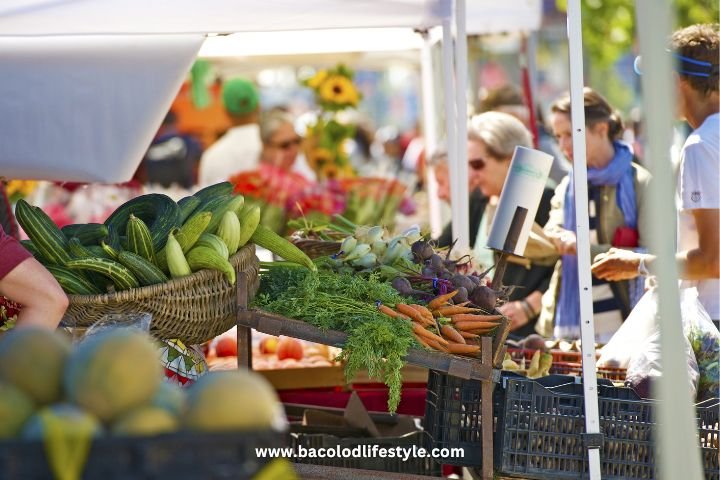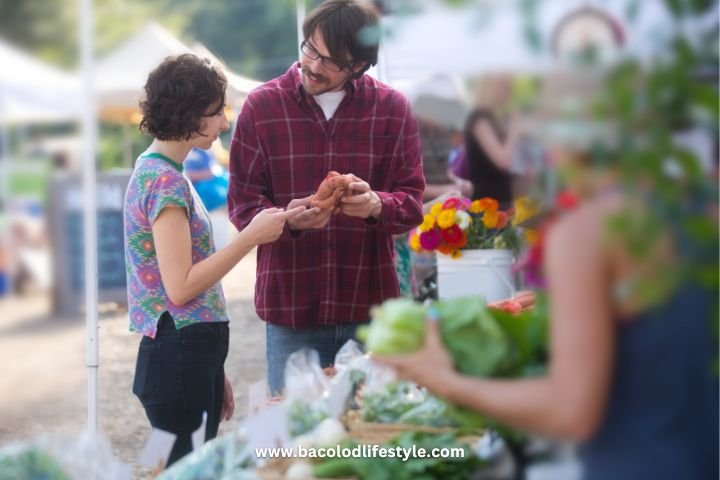Farm to table living is the latest trend that people are embracing for improved nutrition and sustainability. With more communities adopting local eating, the ability to pick fresh fruit and vegetables straight from farm stands or even from backyards has become increasingly accessible.
Maybe you’re a home gardener looking for quality produce or perhaps you are just exploring your options — either way, knowing how to properly pick the freshest fruits and vegetables can be a challenge. Let’s discuss some helpful tips on selecting only the ripest produce so that you can reap its full nutritional benefits!

Visit local farmers and wholesalers
Exploring local farmers’ markets and wholesalers can be a fantastic way to get hold of the freshest, tastiest, and most affordable produce in your area. Whether you’re looking for seasonal fruits, ripe vegetables, or a range of delicious herbs, you’re bound to find something that ticks all the right boxes. Many people are surprised to find that a fruit and veg wholesaler is often far cheaper than supermarkets, meaning that you can stock up on healthy goodies without breaking the bank. And best of all, you’ll be helping to boost the local economy and reduce your carbon footprint by supporting local businesses. It’s a win-win for everyone involved!
Make sure to shop early in the day
There’s nothing quite like sinking your teeth into a crisp, fresh piece of produce. But how do you ensure that you’re getting the best, most flavorful fruits and vegetables? One simple trick is to make sure that you do your shopping early in the day. This applies especially if you’re buying from a farmer’s market or roadside stand where produce is likely to have been picked that morning.

If you’re early, you’ll be able to pick from the freshest selection, and you’ll also be able to take your time and ask the farmer or vendor any questions that you might have about their produce. This can help you gain valuable insight into what’s in season, what’s ripe, and which fruits and vegetables are at their peak flavor.
Bring a cooler bag or insulated grocery bag
When we think about grocery shopping, we often focus on finding the freshest produce and best deals. It’s easy to forget about what happens next as we bring those items home. But have you ever arrived home with wilted lettuce or slimy strawberries? It’s frustrating to throw away your carefully chosen items because they didn’t last in transit. To prevent this, make sure to bring a cooler bag or insulated grocery bag when you go shopping for produce. This will keep your fruits and vegetables fresh until you can get them home and into the fridge.
Be aware of seasonal produce
Many people often overlook the importance of buying seasonal produce. However, you must know what fruits and vegetables are in season as they tend to be fresher, more flavorful, and even less expensive. When produce is in season, it doesn’t need to travel far distances and can be picked at the peak of ripeness. This means that you’ll get the most nutritious and delicious produce available.

To stay on top of seasonal produce, do some research or ask your local farmers for guidance. You can also keep an eye out for signs at the grocery store or farmer’s market that highlight what’s in season. Conversely, if a particular fruit or vegetable is out of season, it may have been imported from a far distance and may not be as fresh.
Look for signs of freshness
The easiest way to ensure that your fruits and vegetables are fresh is by looking for signs such as vibrant colors and firmness. A dull or discolored exterior indicates that the produce may be past its prime.
If the fruit or vegetable feels mushy, it may be overripe and not as fresh as it could be. When selecting produce with the right level of firmness, you are ensuring that it will taste its best and also last longer. The next time you’re at the grocery store, take the extra time to check for these signs of freshness to ensure that you’re getting the best produce possible.
Ask questions
Have you ever wondered what goes into producing the tasty fruits and vegetables you find at the farmer’s market? Well, one great way to satisfy your curiosity and learn more about the practices used by farmers is to ask them directly.

Engage the farmer in conversation and ask questions about how they grow their produce. You may be surprised at how informative and educational the experience can be. Whether it’s the use of organic fertilizers, planting techniques, or pest control methods, there’s always something new to learn. Of course, you can also ask for recommendations on the best produce to pick for your needs.
Sample before you buy
Before buying in bulk, ask if you can taste a fruit or vegetable to gauge its freshness and flavor. Many vendors at farmers’ markets and independent grocery stores are more than happy to provide samples.
Still, it’s a good practice to ask first to respect the seller’s goods and time. This way, you can ensure that the produce you’re bringing home meets your standards for taste and quality, making your farm-to-table experience all the more enjoyable. Even better, you might even discover a new fruit or vegetable that you love!
Store your produce correctly
Once you’ve secured the freshest fruits and vegetables, it’s critical to store them properly to maintain their freshness. Keep in mind that not all produce should be stored in the refrigerator. Fruits like melons, mangoes, apples, and berries can be refrigerated, but others like bananas, tomatoes, and avocados do best at room temperature. Many vegetables prefer the cool of a refrigerator, but onions, potatoes, and garlic are like a cooler, dark place that isn’t necessarily the fridge.
It’s also worth noting that some fruits and vegetables shouldn’t be stored together due to the release of ethylene gas which can speed up ripening. Understanding the proper storage methods for each fruit and vegetable can extend their freshness and allow you to fully enjoy their flavor.
Image source: https://unsplash.com/photos/carrots-and-leeks–r5KSMkyoSc
The journey from farm to table can be an enlightening and gratifying experience. By prioritizing local and seasonal produce, shopping strategically, and taking time to engage with farmers, you can enjoy the freshest, most flavorful fruits and vegetables while supporting your local community.
The best produce is picked at its peak ripeness, so keep in mind that taking the time to find and pick the ripest produce is essential for reaping all the nutritional benefits. Go ahead, visit your local farmer’s market or wholesaler, and start experiencing farm-to-table living today.
You might like these:

Leave a Reply